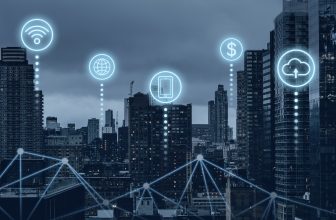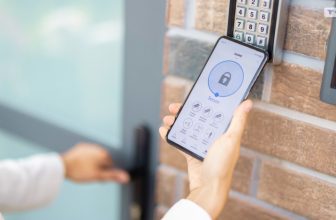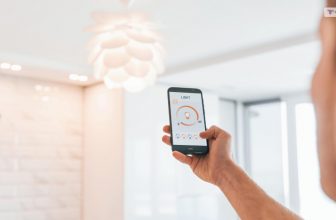
I have transitioned my house to a smart home in the past few years. And no, it is not because having or using smart home devices is fancy or trending. It is simply because technology has become an integral part of our lives.
There is not a single day when we do not use it to automate tasks in our day-to-day lives. Be it asking Alexa to dim the lights or have a smart faucet that would help us control water wastage, smart devices surround us.
However, you might say that these devices are not really a necessity in our lives. Well, yes. You are right! But what about the ones with visual impairment? For them, having these devices makes the world a much more convenient place to be in.
So, in order to ensure that I am able to turn my house into a smart home successfully, I researched a lot of smart home devices. And that is what I am going to bring to the table.
If you are someone who is also like me, looking for ways to transition to having a smart life to ensure that every part of your home is connected to the IoT, you have reached the right place!
So, keep reading this blog until the end to learn it all…
What is a Smart Home?
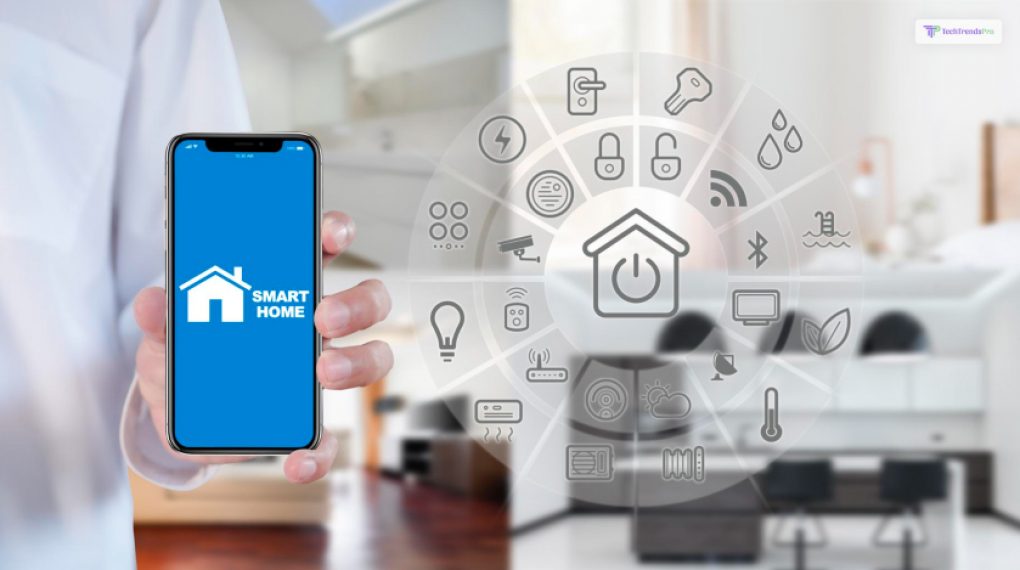
As I have already discussed in my other articles, a smart home is a building that uses devices connected to the internet. With the help of several features like remote monitoring and management, these appliances automate the tasks of homeowners, making their lives more comfortable.
In most cases, people are not aware that they are using smart devices. In most cases, people are not aware of the fact that their house is partially smart.
I will give you an example. Some houses have a robot vacuum, which is not so spacious but extremely effective in cleaning. They might also have a smart air purifier or tell Siri to play some music. However, not all parts of the building are connected to the internet.
This is mainly because, most of the time, people choose to have a smart device without thinking they are investing in one. They do so simply for the convenience.
The best part about having a smart home is the fact that you can control your house appliances from anywhere. All you need to do is stay connected to the internet.
Some of the most common and important smart home appliances can help you control crucial functions related to the house. For instance, with the help of smart home devices, you can control the house’s lighting, security, and temperature.
What are Smart Home Devices?
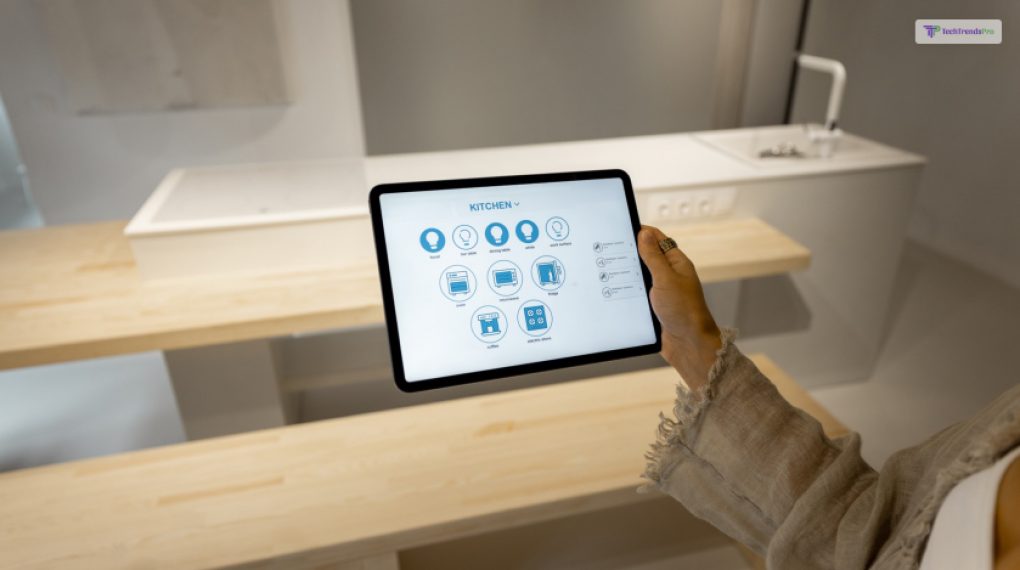
So, now that you know what a smart home is, it will be easier for you to know what smart home devices are. They are simply appliances or devices that can be connected to the internet or one another with the help of a central medium. This can be a tablet, a smartphone, or even your game console.
Interesting, right?
According to Investopedia, these appliances “come with self-learning skills so they can learn the homeowner’s schedules and make adjustments as needed.”
For example, smart homes that have light control enabled with the help of their devices will be able to assist homeowners in curbing excessive electricity usage. This will also help them to ensure that they cut down on the cost related to electricity.
Once you connect all the smart home appliances to the Internet through a shared and common medium, they collectively become a part of the Internet of Things (IoT). It is important for you to understand this because when the devices become a part of the IOT technology, they can gather electronic information through the same network.
As times evolve, so does technology. The extensive list of smart devices that one can have in one’s house can shock you! From smart mirrors to smart blankets, there is absolutely no end to the list.
For example, a smart mirror can act like a normal mirror. However, they have an electronic screen that can provide information with the help of widgets. These can range from whether, date and time, and news updates of the day.
On the other hand, a smart blanket can help you in ensuring that you control and adjust the temperature. You can also toggle the modes and settings of the blanket at your convenience and with your requirements.
How Can Smart Home Devices Help Visually Challenged People?
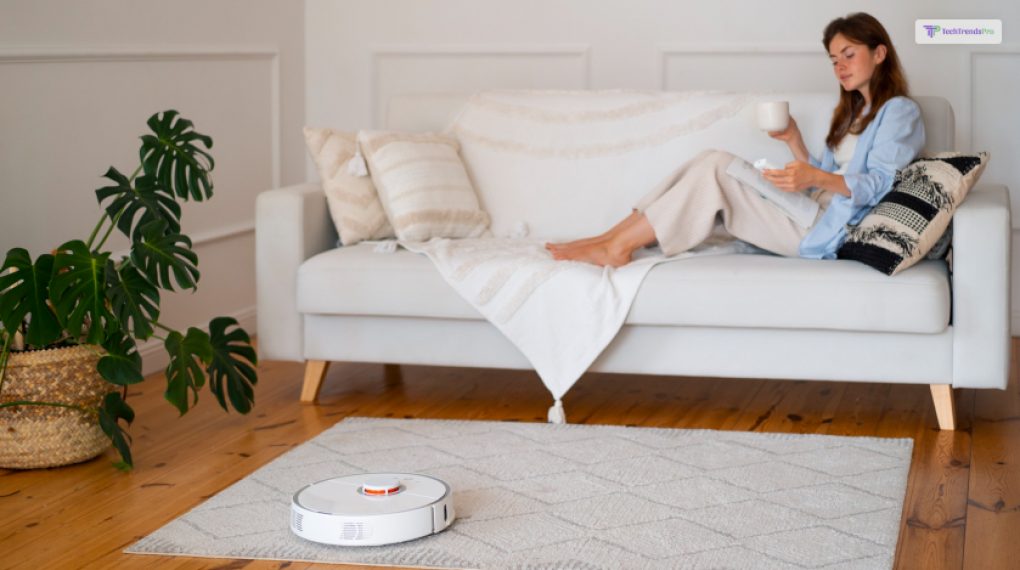
Now let us take a turn from all this nice and happening. Apart from the fact that smart home devices are trendy and efficient, these devices can be of great help to those who are not like everyone else.
While smart home devices and home automation can be a luxury for most people, they can be a necessity for people with disabilities. They can be nothing short of a powerful enabler.
For example, when it comes to visually challenged individuals, smart home appliances can be nothing less than a blessing for them.
Smart home devices offer a lifeline of independence for visually challenged people. By responding to simple voice commands, these devices enable individuals to control their environment effortlessly without physically interacting with controls or buttons.
They provide crucial auditory feedback, relaying information about the home and the wider world, which is easily accessible and understandable.
Navigation aids built into these devices can help guide visually impaired users safely around their homes, using sound or tactile signals to alert them to obstacles or changes in their surroundings.
Advanced object recognition technology can verbally identify items around the house, simplifying daily tasks like selecting clothes or finding kitchenware.
Moreover, the customizable nature of these devices means that you can tailor the settings to individual needs, enhancing contrast or providing audio descriptions to make the interaction more intuitive.
I think it is safe to say that smart home devices are not just tools but companions, offering people with visual impairment a greater sense of freedom and self-reliance in their daily lives.
Best Smart Home Devices for Visually Challenged Individuals!
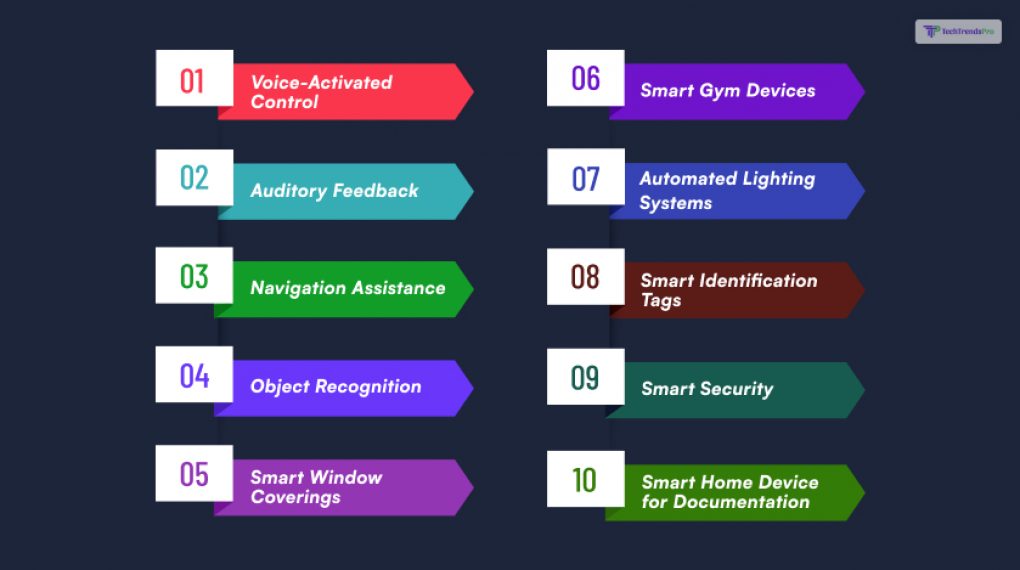
As I have already mentioned, smart home devices can be of any type. These range from bedroom smart home devices to garage or yard appliances. The smart home systems can be both hardwired or wireless. OR, they can be both. However, the latter has a lot of benefits over the former.
For instance, when it comes to wireless smart home devices, they are rather easy to install, can help with climate control, and can be great at cutting costs.
While all that is true, there remains a downside to these wireless appliances. To name one, let’s just say that you need to have great internet connectivity and strong Wi-Fi coverage throughout your house.
In this blog, I have listed all the smart home devices you want to try out this year if you are visually challenged. These can also be a great gift for your dear ones who you think might need them.
If you are someone like me who is always trying to add something of utility to your house, this is the blog you need to read until the end.
So, without further ado, let us deep dive into this list of the best smart home devices that you should choose according to your preference:
1. Voice-Activated Control
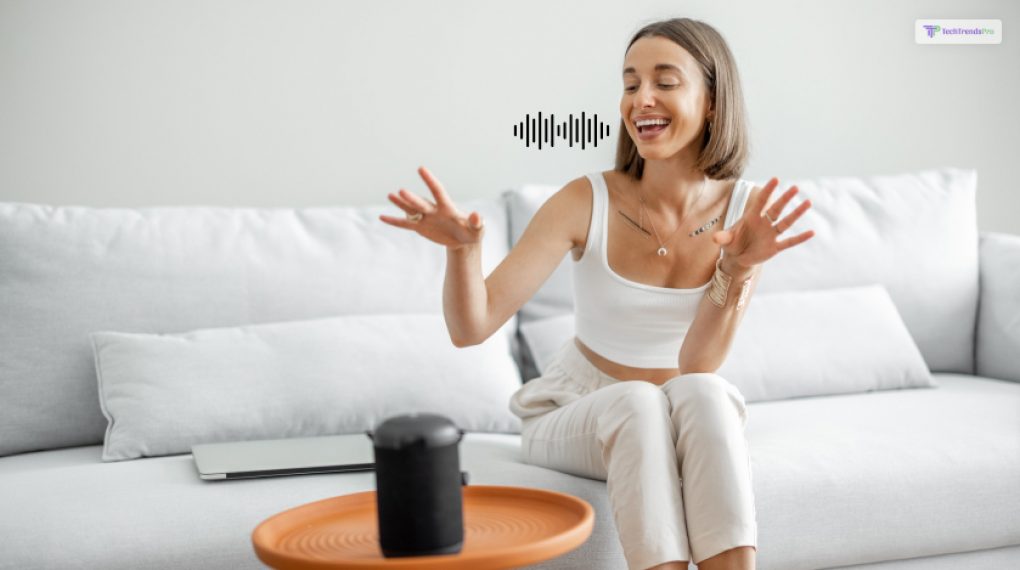
The first ones on this list are the smart devices with voice-activated control. These devices respond to voice commands and allow visually impaired individuals to control their environment without locating physical switches or buttons.
The best ones on this list that you can get in 2024 are:
Amazon Alexa
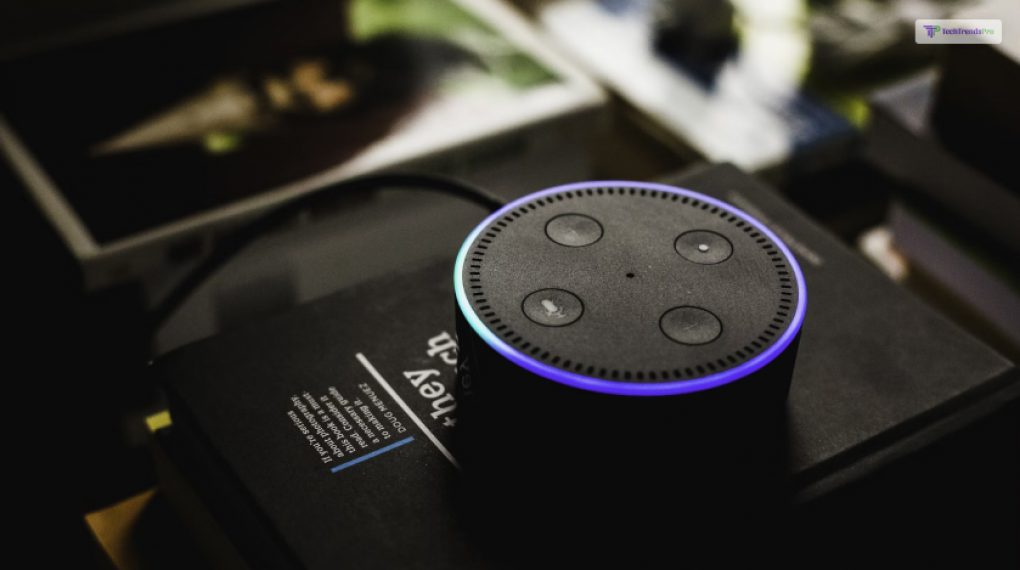
Known for its wide range of compatible devices and intuitive voice control, Amazon Alexa allows users to manage various smart home functions such as lighting, temperature, and security with simple voice commands.
Google Home
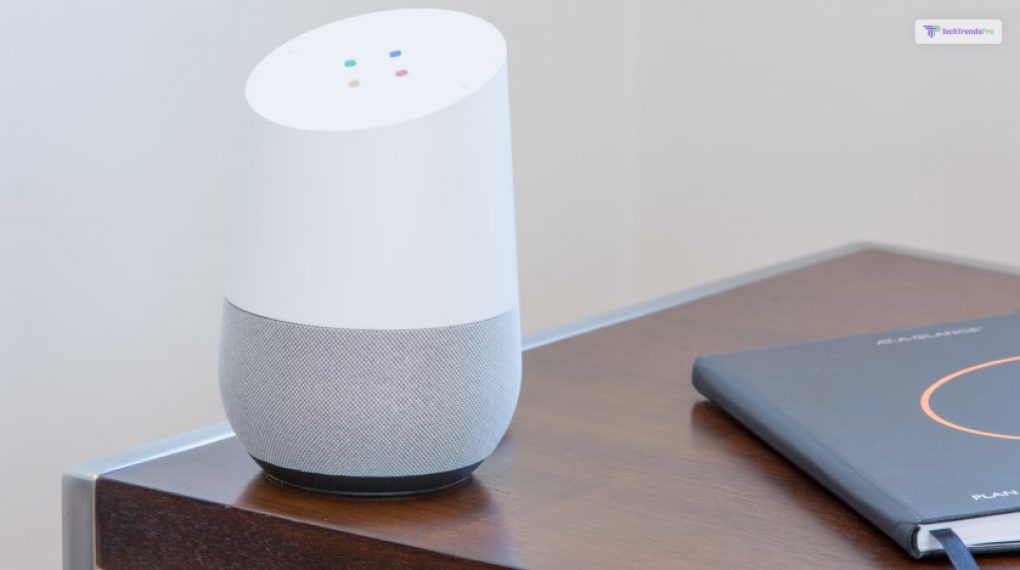
Google Home offers a seamless voice-activated experience, enabling control over many smart devices. It is particularly popular for its ability to understand natural language, making it very user-friendly.
Apple Home
With its focus on privacy and a robust ecosystem, Apple Home is another excellent choice for voice-controlled smart home management, offering compatibility with various devices and straightforward voice commands.
2. Auditory Feedback
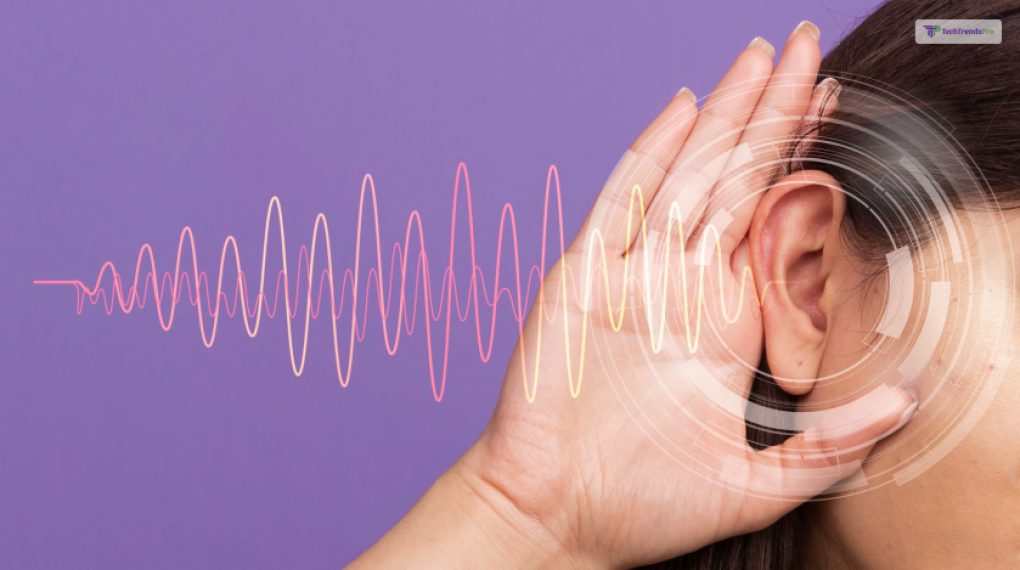
The auditory feedback of smart home devices is one of the most important points on this list that a visually challenged person can have. These can respond verbally to queries about the status of home appliances, weather, news, and more, making information easily accessible.
Now, just imagine how much of a help this would be for a disabled person. For someone who cannot understand or gauge the day’s weather by looking at the sky; for someone who lives alone and cannot ask anyone in their house for the weather. This is nothing less than a life saver.
Here are some of the best smart home devices that can provide auditory feedback:
eSight Go
The first one on the list is eSight Go. This device offers glasses equipped with a camera that captures the environment and uses software to enhance it. Furthermore, it helps in projecting the image onto OLED displays in front of each eye, providing auditory feedback to navigate the visual information.
Orion Smartphone App
Second on this list is the Orion Smartphone App. This one is a great and extremely helpful app that assists visually impaired individuals. It provides auditory feedback in order to locate objects and text in their environment. In this way, it makes the navigation and identification much easier for those who are unable to do so.
Phonak Audeo Paradise
Lastly, in 2024, Phonak Audeo Paradise is making heads turn. It is a Bluetooth hearing aid that connects to smartphones and TVs. This device is also very compatible with several other smart apps. The most important reason why it is so popular is because it provides alerts directly in the user’s ears, ensuring they are always audible and informative. Even though this device is a bit on the expensive side, this is surely going to make a lot of difference.
3. Navigation Assistance
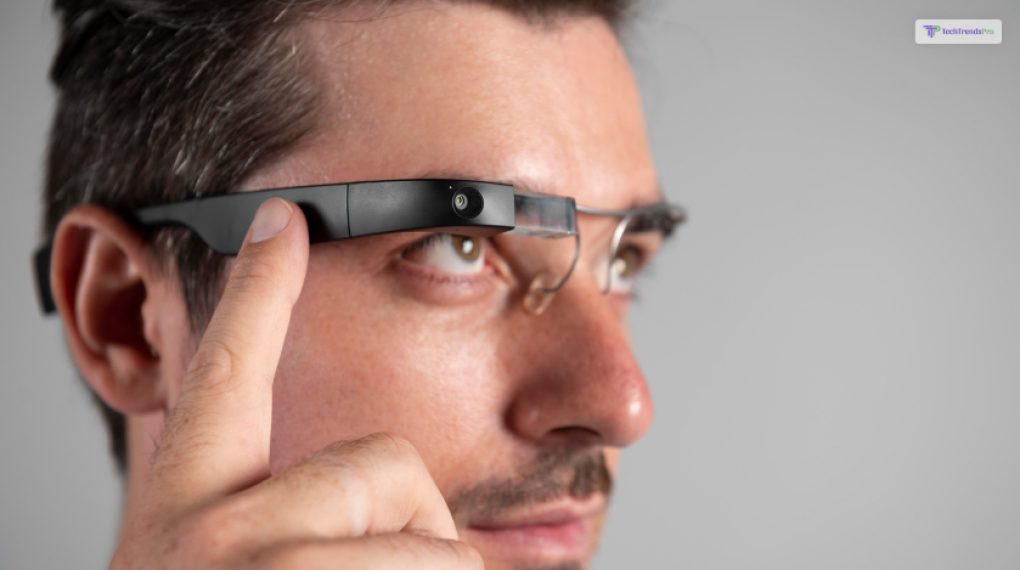
What do you think is the most difficult thing for a person with visual impairment when they arrive in a new place or environment? If your answer was navigating the unfamiliar, you are absolutely right!
Some devices can guide individuals through their homes using sound or tactile feedback. They can help them move around safely and independently without the help of anyone else.
Wondering what THESE might be? Here are the top three smart home devices for navigation assistance that you need to take a look at in 2024:
Glide by Glidance Inc.
The first one is a Glide. This device stands out at CES 2024 for its ergonomic design, advanced navigation capabilities, and potential for app integration. It’s a self-guided mobility aid that uses haptic guidance, active scene description, and forced stop mechanisms to help users navigate safely.
Envision Glasses
These glasses are equipped with AI-powered recognition technology. It allows users to read texts, recognize faces, and interact with their environment hands-free. They complement mobility aids like Glide by providing an additional layer of environmental understanding.
eSight Go
Yes, I know; it was a part of the best smart home device that provides auditory feedback. But guess what? It is a great one when it comes to navigation assistance.
This device includes a camera to capture the environment, enhances it through software, and projects it into OLED displays in front of each eye.
It’s designed to assist people with various eye conditions, including macular degeneration and diabetic retinopathy. You can expect to launch in March this year.
4. Object Recognition
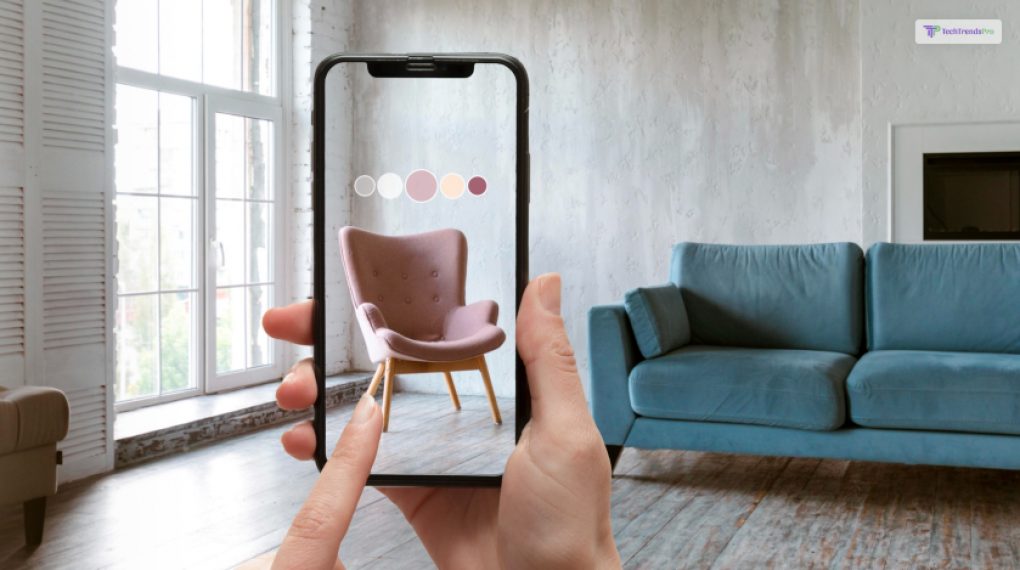
Cameras and sensors can identify objects and relay information about them audibly, aiding in tasks like finding items or reading labels.
AiSee
Developed by the National University of Singapore, AiSee is an affordable wearable assistive device that helps visually impaired people “see” objects around them with the help of AI.
It includes a micro-camera that captures images for processing and uses cloud-based AI algorithms to identify objects.
It also features an interactive Q&A system powered by advanced speech-to-text and text-to-speech recognition technology.
Seeing AI (iOS)
Seeing AI is one of the best inventions of the present when it comes to helping visually impaired individuals. How does it work? Well, for starters, this app provides auditory information about the world around you. It can read currency, name colors, and even decipher handwritten cursive by pointing your phone or iPad camera at something.
It’s an AI-powered app that assists with various tasks and improves accessibility. It can identify and describe people, products, and text, making it easier for visually impaired users to understand their surroundings.
The app reads printed text aloud in real-time, including handwritten notes, which can be incredibly helpful for reading mail, labels, and more. Seeing AI works offline for certain features, providing continuous assistance without the need for an internet connection.
Users can teach the app to recognize faces, which it will then announce when encountered, adding a layer of social interaction for visually impaired users.
Lookout (Android)
Lastly, on this list is something very similar to Seeing AI. This one is Lookout, an app for Android users. It uses computer vision to assist with tasks and provide information about the environment through auditory cues.
Lookout helps users identify objects around them, which can be particularly useful for navigating unfamiliar spaces or finding specific items at home. The app can read text aloud, such as signs or mail, which is helpful for those who have difficulty reading printed text.
It provides information about people nearby and other environmental details, allowing for better spatial awareness. Lookout offers various modes tailored to activities like home chores or office work, delivering relevant information for each setting.
5. Smart Window Coverings
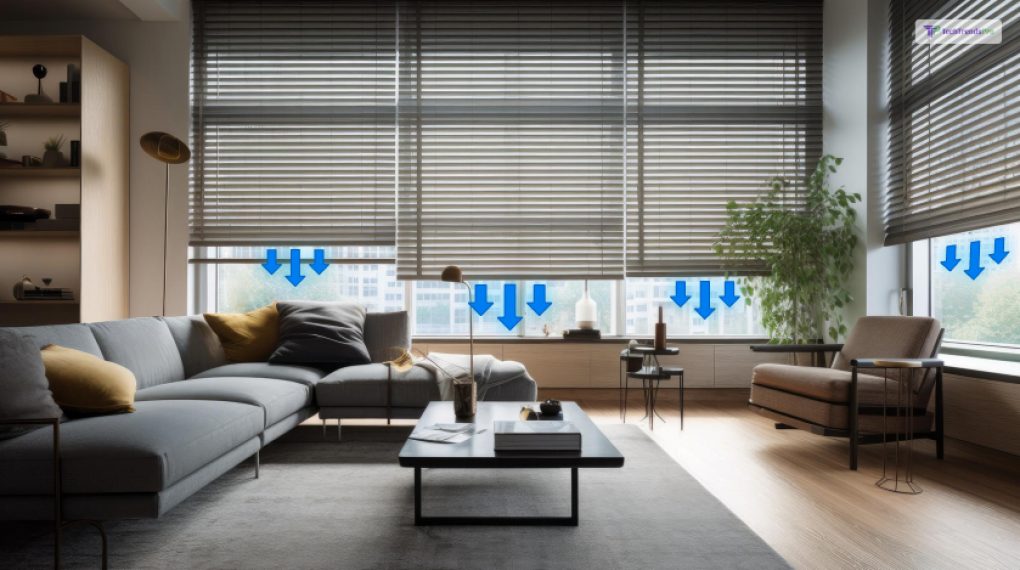
The next one on this list of the best smart home devices for visually challenged individuals is Smart Window Covering. These devices often have settings that can automatically adjust window coverings to control the amount of natural light entering a room. And THIS is highly beneficial for people sensitive to light or with other visual impairments.
Here are some of the best smart home devices for this:
Lutron Serena Smart Roller Shades
If you are looking for a versatile smart blind, this is the one you need. Numerous customization choices are available for Lutron Serena shades, including shade type (honeycomb or roller), fabric (over 150 varieties), opacity, and color.
They can be powered by a direct power connection or D-cell batteries, which have a two to four-year lifespan. These shades are safer for households with children because they are designed without outside cables, which might potentially cause strangulation.
And that is not all! Their compatibility with popular smart-home systems enables smooth integration and control via voice commands or applications.
The only drawback that I could find was its exorbitant price. But if that is something that you care little about, you should definitely go for it!
SmartWings Blinds
The next smart blind that you must take a look at is SmartWings. There are several smart home device protocols that this smart blind supports. These include Matter over Thread, Apple HomeKit over Thread, Zigbee, Z-wave, and Alexa.
With leading-edge technology for smart homes, they were the first to ship a full Matter/Thread-enabled window cover.
Apart from its automation system, up can also use a solar panel in conjunction with many SmartWings solutions to provide charge-free operation and improved energy efficiency.
Furthermore, SmartWings offers a 3-year warranty for motors and controllers, guaranteeing dependability and client delight. Additionally, customers can select from a range of fabrics and styles to fit their decor with their unique design service.
6. Smart Gym Devices
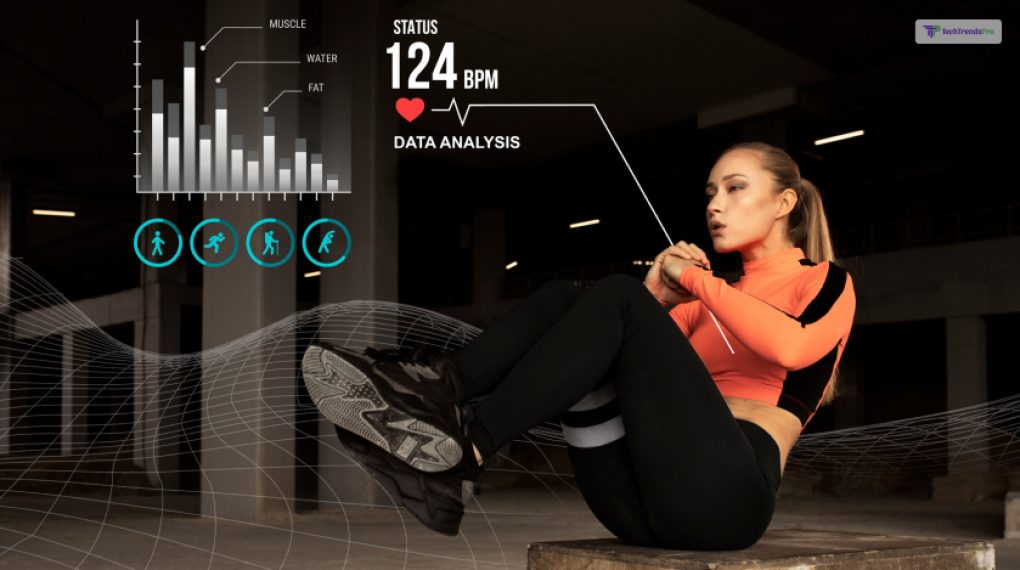
Irrespective of whether to be a person with a disability or not, the need to be fit, to stay fit, is universal. People with visual impairment also have the right to fitness. However, previously, not many gym equipment could help them out.
But times have changed. Now, visually challenged people can use smart gym equipment connected to the same network, a part of the Internet of Things, to ensure they get all the benefits. These devices are designed to enhance the workout experience at home with features that cater to the needs of visually challenged individuals, such as voice commands and tactile interfaces.
So, here are some of the smart home gym devices that you might want to try out:
Tonal
Tonal is a wall-mounted home gym that offers personalized strength training through AI-powered weight adjustments and form correction. It includes a touchscreen and can provide real-time feedback on your performance.
Tonal’s interface is designed to be intuitive, offering voice commands for navigation and control. These are some of the things that can be beneficial for users with visual impairments.
However, the touchscreen may require sighted assistance for initial setup or adjustments.
Tempo Studio
Tempo Studio uses 3D sensors and AI to provide real-time form feedback during workouts. It comes with a full set of weights and offers a variety of classes, including strength training and cardio.
The real-time feedback and guidance provided by Tempo Studio can help visually impaired users correct their form and ensure they are performing exercises safely.
The device’s reliance on visual cues for form correction may necessitate some adaptation for users with visual impairments.
NordicTrack Fusion CST Studio
This device combines strength and cardio workouts in one machine. It features Silent Magnetic Resistance (SMR™) for a smooth experience and includes a full-length mirror to monitor form.
The Fusion CST Studio’s auto-adjusting resistance and audio cues from iFIT trainers can guide visually impaired users through workouts.
The mirror is an added feature for those who can use it, but the audio guidance is the key aspect for users with visual impairments.
7. Automated Lighting Systems
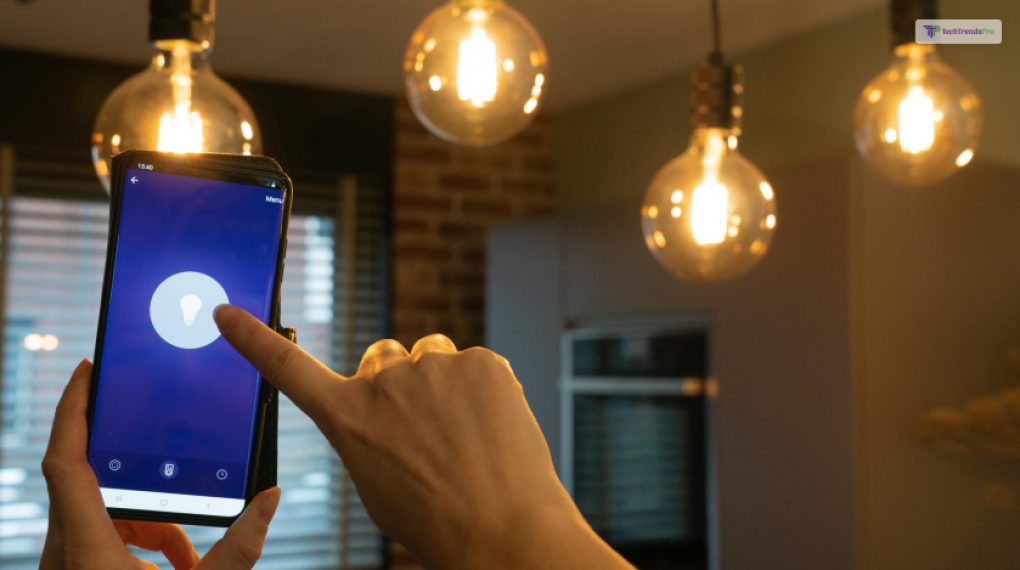
The automated lighting systems are adaptive in nature. These systems adjust the brightness and color of lights based on the time of day or the user’s preferences, which can help those with partial sight.
In other words, you can program these smart lights to provide optimal lighting conditions for those with visual impairments.
Here are some of the best devices that you can have in this regard in 2024:
Philips Hue Color Ambience
It is anticipated that Philips Hue will release a function that turns lightbulbs into motion sensors, akin to WiZ’s SpaceSense. The Hue Discover floodlight and the Hue Secure camera will be combined into one product with the release of the Philips Hue floodlight camera in the first quarter of 2024.
Software development is the main focus, and future additions could include system-wide backup capabilities or support for numerous bridges. The Lightguide concept that is present in the current version will stay. In fact, two scaled-down versions may be released.
Wyze Bulb
The newest generation of Wyze bulbs is called Wyze Bulb White. It is a smart, tunable LED bulb with a high Color Rendering Index (CRI) of 90+, meaning that colors will look more natural in its illumination.
It has Sun Match, which optimizes lighting by adjusting color temperature, and Sleep Routines, which let you create personalized lighting schedules that lighten or brighten over time.
The Wyze Bulb White boasts a 25,000-hour lifespan and a simpler setup procedure, enabling you to set up many bulbs simultaneously through the Wyze app.
8. Smart Identification Tags
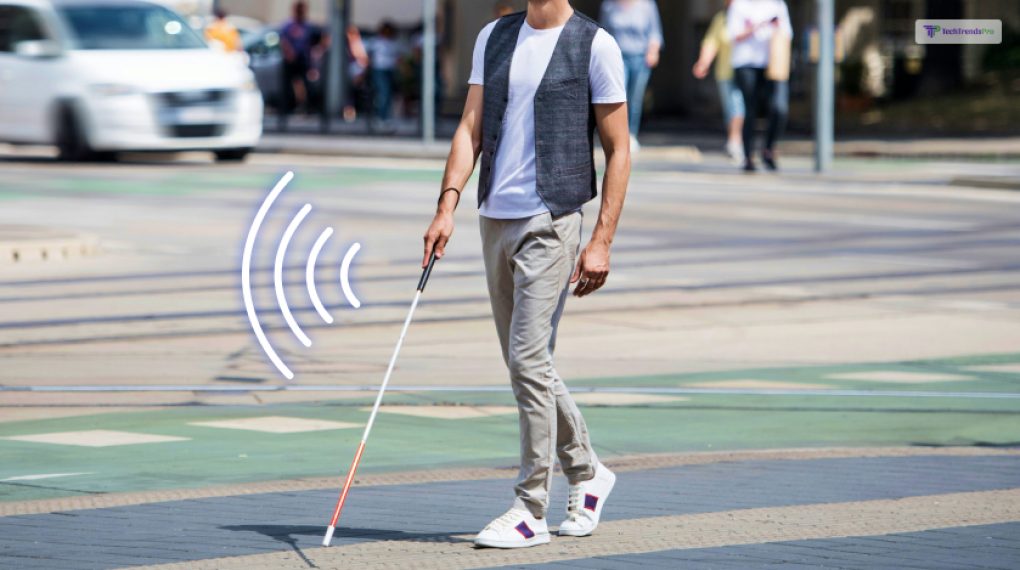
When it comes to IoT-aided Identification Tags, you can attach these to items around the house using RFID or NFC technology. Along with this, you can attach a compatible reader device can help the user identify the item by providing audio information.
These smart devices offer a combination of convenience, safety, and independence, which is crucial for individuals with visual impairments.
Here are some of the best products in this regard that you need to check out:
Wearable Smart Glasses
Some of the best smart glasses, like Acesight VR and NuEyes Pro, are great for visually impaired people. You can control them either through the wireless controller or through a few sets of voice commands to operate the products.
These glasses are equipped with advanced technology such as cameras, Lidar, Bluetooth microphones, and speakers. They assist with reading, navigating, and recognizing objects and faces.
For visually impaired individuals, these glasses can provide audio descriptions of their surroundings, read out text, and help identify people and objects. This can greatly enhance their independence and mobility.
Intelligent Walking Stick
This walking stick integrates various sensors, including ultrasonic, water, and light sensors, and a microcontroller like Arduino Uno R3. It can detect obstacles, measure heart rate, and monitor environmental conditions.
The engineers at the University of Colorado Boulder have created one such product. Here is a clip that will make you clearer with the concept.
The stick can alert users to obstacles through vibrations or audio signals, helping them navigate safely. The additional health monitoring features can also be crucial for emergency situations.
Tile Pro Smart Tag
Tile Pro is a robust Bluetooth tracker with a loud ringer and a user-replaceable battery. It’s designed to help locate belongings and is IP67-rated for dust and water resistance.
Visually impaired users can attach Tile Pro to important items like keys or bags. If these items are misplaced, the loud ringer can guide the user to their location, making it easier to find lost objects.
9. Smart Security
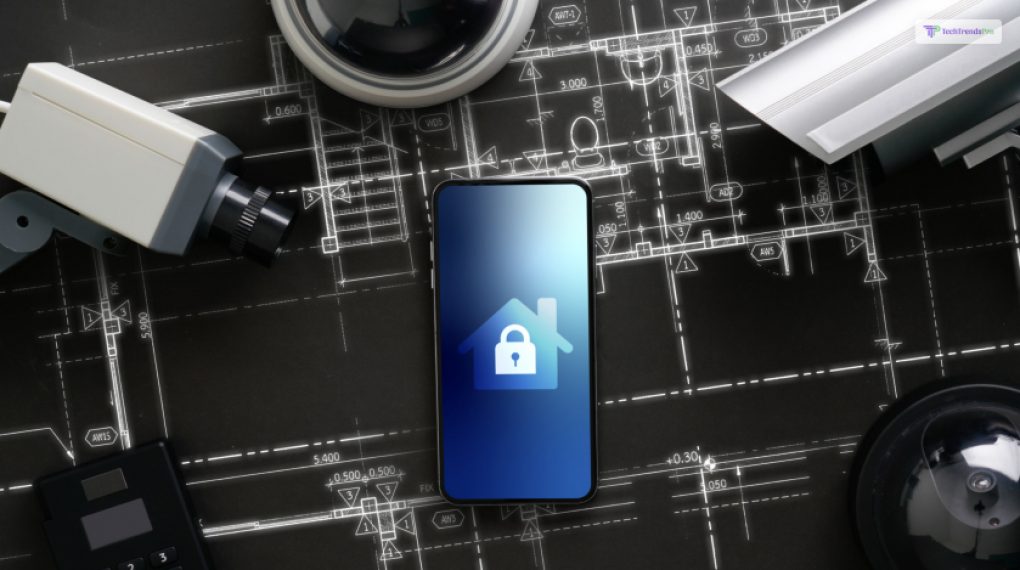
The next thing that you would need in a house is security. You need to feel safe in a house, right? Yes, I know! And that is why most of us, whether with disability or not, are looking for smart solutions and devices that will cater to this need.
For someone visually impaired, it is one of the most important things to have in their house. They need to be assured that they are secure and safe. And THAT is something that the devices that offer smart security will help you with!
When it comes to that, cameras that are part of the network can greatly help you. Here are the two cameras that you need to know about:
Vivint Smart Home
If you want to avoid investing or going through the tedious process of setting up every smart home device for security one by one, this is the one you need.
The smart home system that Vivint Smart Home provides is one of the best in the market. One reason is that you can enjoy a 24/7 monitoring service through this. You get to monitor the cameras, the door locks, and the thermostat.
While it is true that this one is a rather expensive system, the perks of it being easy to set up or the quick and effective emergency response it provides make it a popular choice for most visually impaired people.
Arlo Pro 5S 2K Spotlight Camera
If you are looking for a security camera that can adapt to any situation, this is the one you need in your house.
The Arlo Pro 5S 2K Spotlight Camera is a highly regarded security camera known for its sharp 2K video quality, dual-band Wi-Fi, and extended battery life. It offers features like color night vision, a 160-degree field of view, and 12x zoom capabilities.
These features can be particularly beneficial for visually impaired individuals, as the enhanced video quality and zoom can help identify details that might otherwise be missed.
However, it’s important to note that while the camera has many advanced features that could assist visually impaired people in some ways, it does not specifically cater to their needs. It lacks HomeKit support, and some features require a subscription.
10. Smart Home Device for Documentation
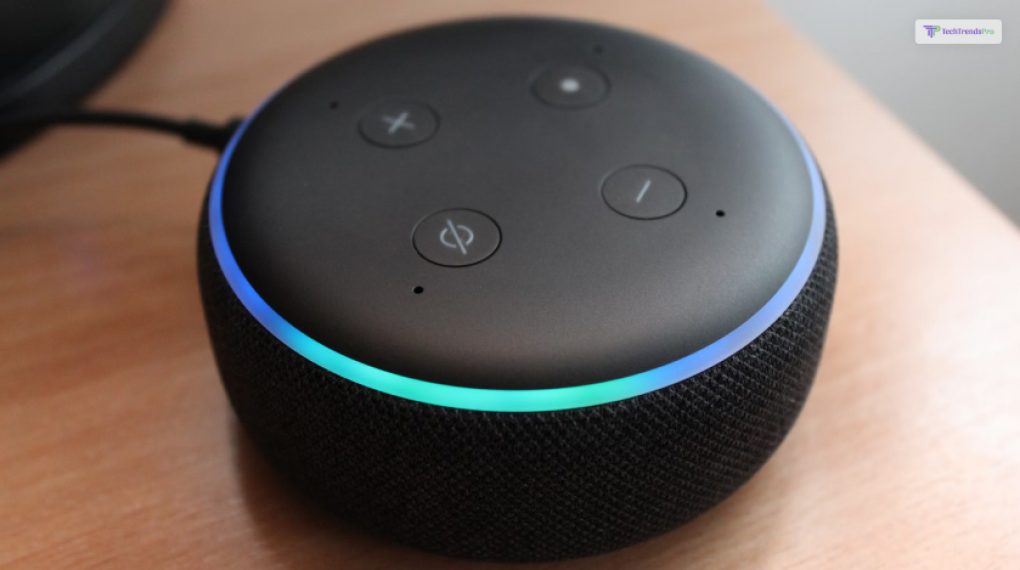
Lastly, I must stress the importance of having a smart home device that helps you document the steps to take when you get stuck. Having a smart home comes with its fair share of smart home issues.
For instance, let’s just say, for the lack of better examples, that you are a visually impaired person. Don’t you think you will struggle to find your way through your smart home’s touch panel to find the function you want?
That is why you need user documentation for your smart home system. With this, the user just needs to ask their voice assistant to help them when needed. Here are some of the devices that can help you out in this:
Amazon Alexa
Before I explain how good this is and how it can help visually impaired people, please watch this video real quick!
Amazon Alexa is a great way to help visually impaired people in their daily lives. For instance, if you get stuck at a point where you need to learn how to troubleshoot your smart home devices, this is something that the voice assistants can help you with.
Along with that, Amazon Blueprint will also greatly help you if you plan to customize some of the prompts and skills for your house. These personalized skills and responses will help your Alexa to become even more knowledgeable. This only ensures that you have a great experience.
In other words, if you have a document ready where all the personalized questions and their responses are prepared, you can use the voice assistant to help out when you need it.
Alexa is available on Amazon. It is also compatible with many platforms, from iOS to Android. So, if this is something you want to get, it is the best decision you will make!
Wrapping It Up!
To wrap it up, smart home devices have really changed things for the better for people who can’t see well. Things like smart glasses, smart walking sticks, and smart tags help them do everyday stuff on their own.
These gadgets talk back, tell them what’s around, and keep them safe. With smart tech getting even smarter, it’s important to make sure these devices work well for everyone. That way, everyone can feel at home in the world, no matter how well they can see.
In case you were searching for the best smart home devices for visually challenged people, I hope that this blog has been of help to you. If there are any other queries related to the same please feel free to reach out!
Read Also:



